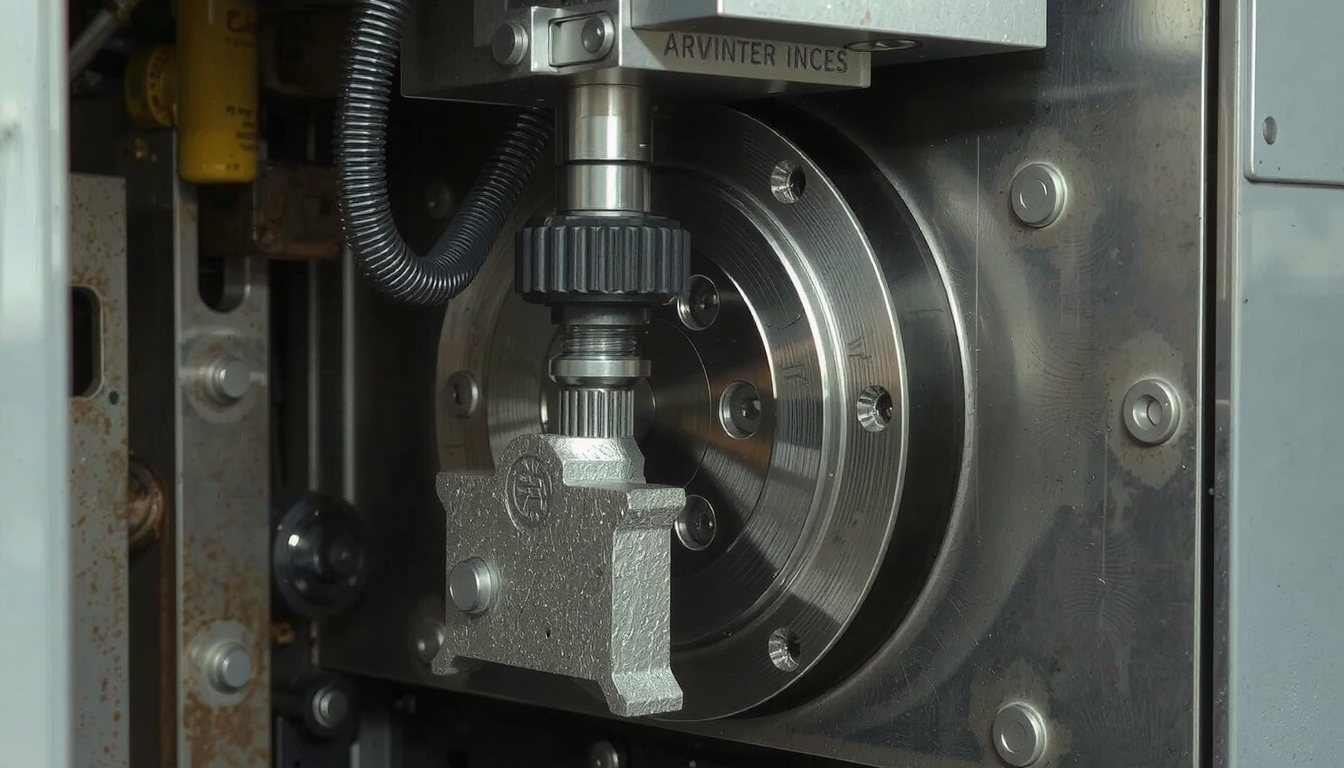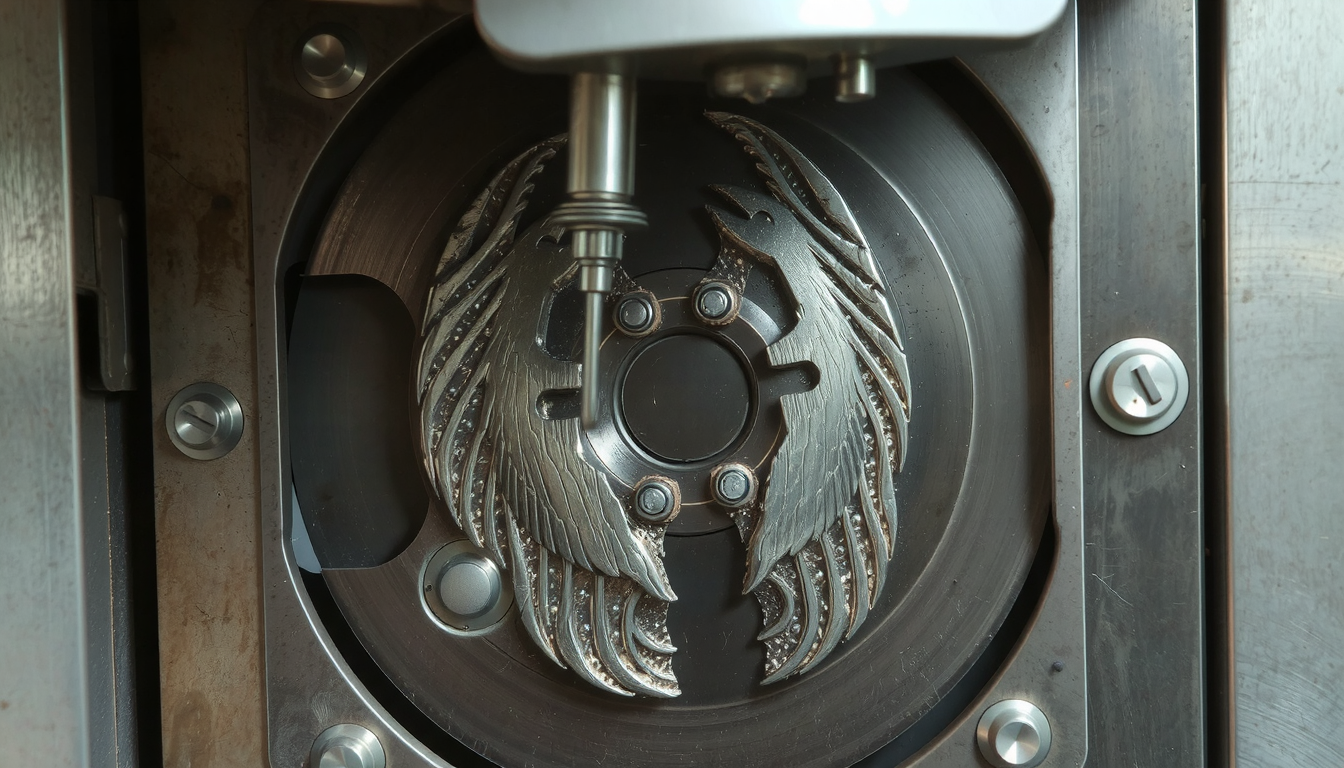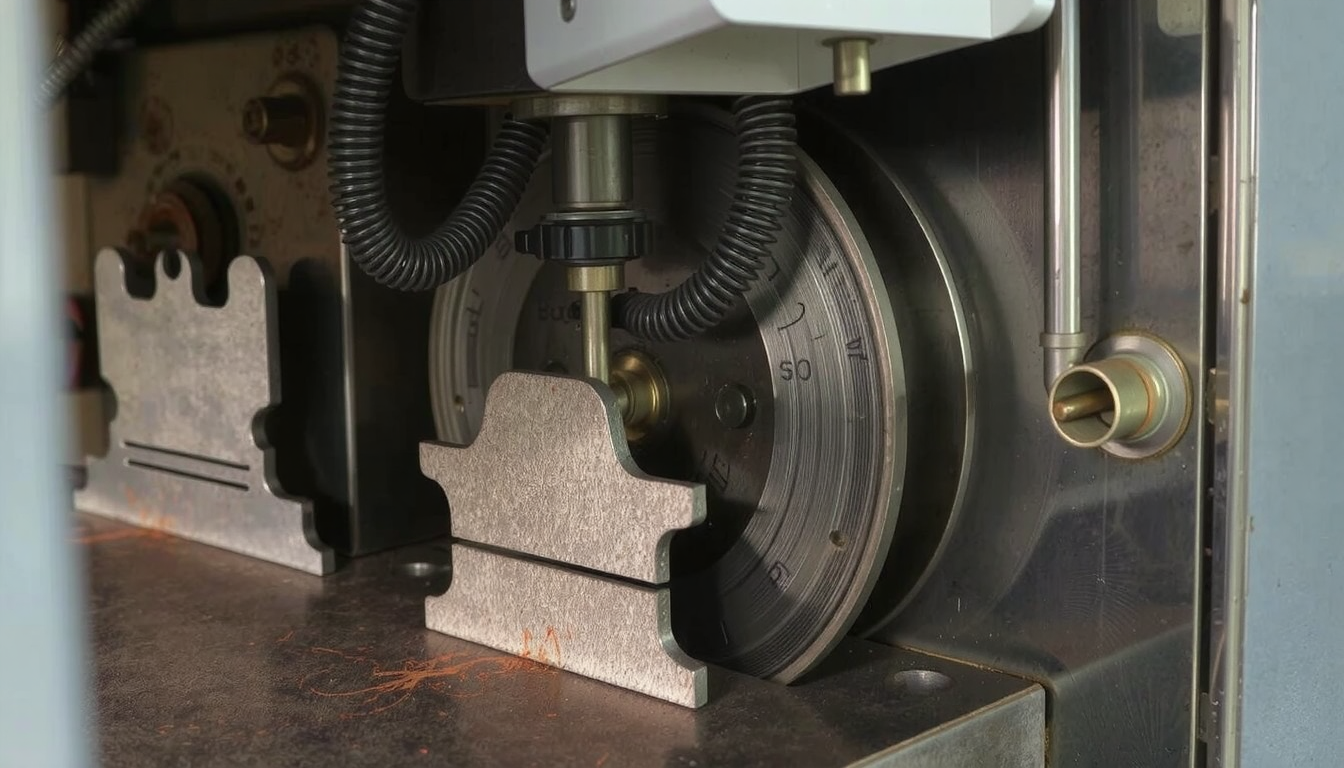Progressive die metal stamping services are one of the best options to quickly produce complex parts made of metal. Aside from being manufactured with high precision, these components are also very similar to each other in terms of the manufacturing process. This guide is a valuable resource for engineers, product designers, and procurement professionals to make well-informed decisions regarding production.

This article outlines what this process is. It points out instances you should take advantage of it. We will give a rundown of its operational procedure. We will also make a comparison with other methods. You will receive info on how to select the right partner. You will also get the right questions to ask. This info is instrumental for a successful implementation of high-volume projects.
What is Progressive Die Stamping? The Complete Process
Progressive die stamping is a fast metal forming process which is entirely automated. A coil of metal is turned into thousands or even millions of identical manufactured items. It is the most suitable method for projects that target speed and precision. It also is very economical per unit.
Going from Metal Coil to Finished Part
The process takes place in one machine only. The machine is a stamping press. All the work is done by a special tool. This tool is a progressive die. Here are the activities in the procedure:
- Coil Feeding: A long strip of metal feeds into the press. A big coil supplies the metal.
- Progressive Stations: The strip moves through stations inside the die. The strip is moved along as per input from the press.
- Simultaneous Operations: Each station does a different job. This can include cutting, bending, or punching holes. It can also form shapes. Multiple actions happen at the same time with every press stroke.
- Part Ejection: The finished part is trim cut from the metal strip at the exit station.
This process is optimal. All operations are finished in one die. This is known to cut down on handling and processing time. High-speed presses can operate at 1,500 cycles in a minute. That is how production breaks record numbers with millions of jobs done fast.
Progressive Die vs Other Techniques: Making the Right Choice
The right decision in the manufacturing process is the key to success. Your factory decision primarily depends on part volume. It also hinges on the complexity of the part and your budget. Progressive die stamping could be a great option for you. However, you must know how it compares to other ways.
A proper understanding of the different processes can save you from incurring unnecessary costs. An experienced provider of progressive die metal stamping services can assist you to make the most appropriate choice on the basis of your needs.

Comparative Analysis Table
This table makes a comparison of three methods for manufacturing metal parts. It is for showing where progressive die stamping is most effective.
| Fonctionnalité | Progressive Die Stamping | Transfer Die Stamping | Usinage CNC |
|---|---|---|---|
| Best For (Volume) | High Volume | Medium-to-High Volume | Low Volume to Prototypes |
| Tooling Cost | Haut | Haut | Low/None |
| Per-Piece Cost | Very Low | Faible | Haut |
| Vitesse de production | Very Fast | Rapide | Lenteur |
| Déchets matériels | Low (optimised strip layout) | Very Low (individual blanks) | High (subtractive process) |
| Complexité des pièces | High (forms on one plane) | Very High (deep-drawn parts) | Extremely High (3D shapes) |
Why You Would Consider Alternatives like CNC Machining
It is possible to find circumstances where progressive die stamping is not the preferred method. For prototypes, it may not work as planned. Very low production runs may need other methods. Very complex 3D shapes often work better with other methods, as these parts cannot be formed from a flat sheet of metal.
For instance, precision components that need intricate internal features and are made from a solid block of material work great with the CNC turning service. For very small, highly complex turned parts, the best accuracy would be achieved with the use of Services de tournage CNC suisse. They are more suitable for low volumes where the cost of expensive tooling has not yet been paid back.
Is Progressive Die Stamping the Best Option for Your Project? A Quick Checklist
Are you sure this process fits your company? This list of questions will guide you. Check whether your project is adequate for progressive die metal stamping services.
Key Project Evaluation Questions
- Annual Production Volume: Is your requirement to produce more than 10,000 to 20,000 parts a year? The high tooling costs make sense for high-volume orders. This essentially leads to the average part cost becoming extremely low.

-
Complexité des pièces : Can a part be made of a flat strip of metal? The process is suitable for parts that include bends and holes. It is also appropriate for other features shaped on one plane.
-
Épaisseur du matériau : How thick is your material in the range of values used in stamping? The thickness is generally between 0.005 inches and 0.125 inches.
-
Cost-per-Piece Target: Is it your single goal to have the least possible cost for each part? The automation in this process allows for the lowest possible cost per piece.
-
Design Stability: Is your design for the part already set? If the designs for the parts change frequently, that can incur a lot of costs related to changes in hard tooling.
-
Tolerance Requirements: Does the part have tight tolerances? Does it need to repeat the same measurements? This process ensures consistency from the very first part to the millionth.
How to Choose the Right Progressive Die Metal Stamping Service Partner
Correct choice of the supplier is as vital as the selection of the manufacturing method. The right partner works as your needed additional resource. They give you the expert know-how that you need to get your project done. The company should offer more than just parts.
A reputable supplier of progressive die metal stamping services typically partners with you to help facilitate the design, which can save you time and money.
Core Capabilities to Look For
- In-House Tool & Die Design/Build: A partner who designs and builds their own tools has more control. They are responsible for the quality, time, and maintenance. This is the most important consideration.

-
Advanced Press Technology: Find out whether companies use high-class presses. For example, Bruderer or Minster are examples. This is a signal of their investment in speed and precision. Top Progressive die high-speed stamping services depend on this kind of advanced equipment.
-
Certifications de qualité : Significant certifications are ISO 9001 for quality management, IATF 16949 for the automotive industry, and AS9100 for the aerospace industry. They act as a sign of commitment to high standards.
-
Material Expertise: The partner should be well-acquainted with many metals, including stainless steel, aluminum, copper, and brass. They should also be knowledgeable on the use of other special alloys.
-
Value-Added Services: Does the supplier provide anything beyond the simple stamping of parts? Look for partners who offer full turnkey solutions. Examples include assembly, plating, heat treating, and custom packaging.
Key Questions to Ask a Potential Supplier
Engaging a potential supplier in conversation with the right questions is crucial. This will uncover their authentic capabilities. Here are some practical things to be asked:
- What is your process for Design for Manufacturability feedback?
- Can you provide case studies of similar parts you have produced?
- What are your quality control measures? Do you use in-die sensors or vision systems?
- Who owns the tool once it is paid for? What is your tool maintenance policy?
- What are your typical lead times for new tooling? What about first article inspection reports?
Our Commitment to Excellence in Progressive Die Metal Stamping
A partner that resonates with your goals is an absolute necessity. We believe that forging strong relationships based on trust, quality, and engineering skill is a solid way to success. We work with the customer and not just for the customer.
At Mekalite, we hold fast to these principles. We have a committed in-house engineering team who devote their time to innovation. We are constant in our use of the best available technology. Our expertise is your access to high-quality product completion. Discover how our manufacturing solutions can transform your project into reality. Come visit us at Mékalite.
Frequently Asked Questions (FAQ) about Progressive Die Stamping Services
The following are responses to the typical questions that people ask about progressive die metal stamping services.
What is the main advantage of progressive die stamping?
The main advantage is the low cost of production for high-volume production runs. Although the initial cost of tooling is high, the fast and automated method results in a very low per-part production cost. It is therefore excellent for large production runs where cost efficiency is a primary concern.
How long does a progressive die tool last?
A tool that is properly made with high-quality steel might last for several million cycles. The life of the tool is dependent on the complexity of the part, the type of metal that is being stamped, and the supplier’s maintenance plan. Servicing on a regular basis is the main criterion for a long lifespan of the tools.
What materials can be used in progressive die stamping?
Numerous metals can be used, including aluminum, stainless steel, and carbon steel. Others would be copper, brass, and various special alloys. Depending on the application’s needs, you can select the most effective material based on strength, electrical conductivity, or rust resistance.
What is the difference between a progressive die and a transfer die?
In progressive die stamping, the part remains attached to a carrier strip as it moves through the die. In transfer die stamping, the part is cut from the strip early. Then a mechanical system moves the individual part from station to station. This method is often more efficient if the parts are larger or need deep drawing.
Can you prototype a part before committing to a progressive die?
Yes. Generally, high-quality progressive die metal stamping services provide a prototype stage. They use methods like CNC machining or laser cutting for the creation of sample parts. Before money is spent on expensive production tooling, this gives you the chance to test and approve the design.
Conclusion: Partner with an Expert for Your Next Project
Progressive die stamping is very effective for making high-volume parts with precision. Success depends on the project details and finding the right manufacturing partner.
Don’t forget to assess your production volume, part complexity, and design stability. What’s more, always choose a supplier that has an extensive engineering background and a long-term commitment to quality. A real partner will accompany you through every step, from design to delivery.
Ready to discuss how our expert progressive die metal stamping services can optimize your next project? Contact our engineering team today for a consultation.

